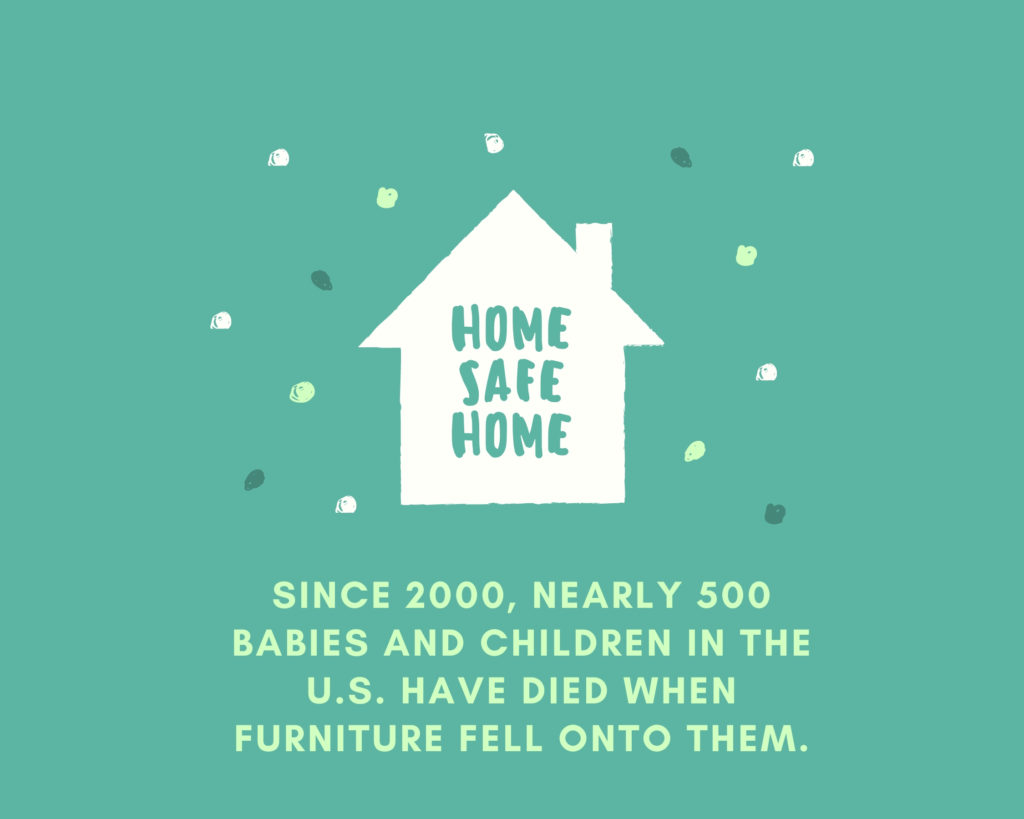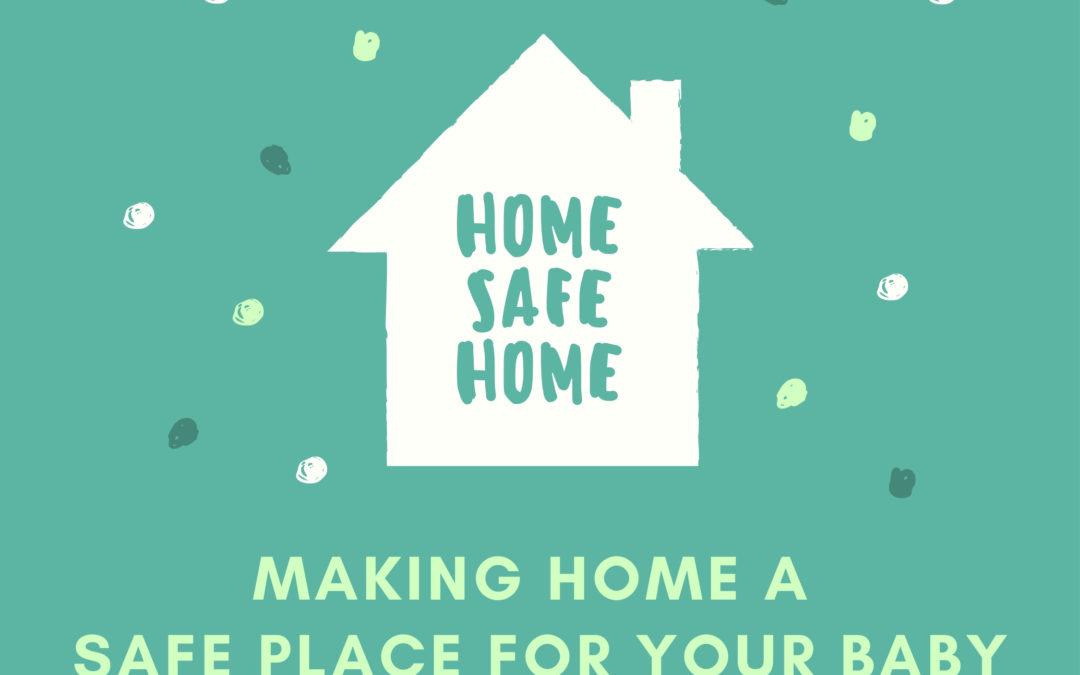Is your home baby proof? | Learn how to make it safe for your new baby.
Your new baby is growing fast. Soon he or she will be starting to move around your home – first crawling and then walking. Baby proofing your home should be at the top of your parenting to-do list. And you should do it before your baby becomes mobile. There are some baby proofing tasks you’ll need to do in every room of your house, so let’s start there. Then we’ll break it down and go room-by-room through your home.
Throughout the House
In every room of your home you’ll want to install plastic electrical outlet covers. These will keep your baby from sticking his or her fingers or any objects into the outlets.
Make sure to secure all electrical cords so that they’re not hanging in a manner that allows your baby to grab them and pull lamps or other appliances onto him or herself.
If you have blinds installed in your home, make sure they are cordless. All standard blinds made in the U.S. since 2019 are manufactured without cords, or with shortened cords that do not pose a strangulation threat to your baby. However, older blinds can have the long, looped cords that your baby can get tangled in. If you have these blinds, upgrade to newer, safer blinds, or cut the cord so it no longer poses a strangulation risk to baby.
Knick knacks and small items within baby’s reach can be dangerous as well. Not only could baby choke on smaller items, he or she could drop and break the items, injuring him or herself on the shards.
Plants can also pose a health threat to your baby. Make sure that any plants you have in your home are not poisonous to small children. Place all planters on high counters, or hang them from the ceiling so your baby cannot reach them.
Vacuum regularly to pick up any small items that may have fallen onto the floor that could pose a choking risk.
If you have dresser drawers, bookshelves, or other furniture in your home that your child could grab onto and pull down on top of him or herslef, use hardware to secure these items to the wall. Since 2000, nearly 500 babies and children in the US have died when furniture fell onto them. The majority of the victims have been between the ages of 1 and 3.5 years old. You can learn more about furniture tipping dangers in your home by clicking here.

If you have guns in your home, make sure they are secured in a safe that your baby or child cannot break into. Keeping them stored out of sight and in a hard to reach place is also a safer option.
Block off stairs with baby gates until your baby has learned to safely navigate them, and/or until baby is able to safely be in a room without immediate supervision.
Room-By-Room Baby Proofing
Baby Proofing Your Living Room
As your baby learns to walk, he or she will spend a lot of time falling down, and sometimes colliding with the sharp edges and corners of furniture. Consider removing these items during those early days until your baby has mastered walking. If you do not want to remove these items, use corner and edge guards to soften any potential collision.
Make sure your television is secured in a way that your baby cannot pull it down on top of him or herself. Mount it securely to the wall, or place it on a piece of furniture where it’s high enough that baby cannot grab onto it. If you choose this option make sure that the furniture that it rests on is sturdy enough that baby cannot shake the furniture and knock the T.V down.
Baby Proofing Your Kitchen
Those low cabinets in your kitchen will be quite an attractive toy for your crawling baby unless you lock them up. There is a variety of cabinet locks on the market. Some require drilling into the cabinets, others don’t. Make sure you lock up any cabinet low enough for your baby to reach.
Before you lock up your lower cabinets, consider what items you’re storing in those cabinets within your baby’s reach. Under the kitchen sink is a convenient place to store cleaners. However, these can be harmful to your baby. Even with a lock on the cabinet, you may want consider moving dangerous cleaners and chemicals from any lower cabinets as an extra security against your baby getting into them. Alternatively, you can consider switching to non-toxic, chemical-free cleaning products for your home.
If you store medications or vitamins in your kitchen, be sure those are locked away in cabinet too. Even if the cabinet is up too high for your baby to reach now, it’s a good thing to lock them up. After all, before you know it your baby will also be climbing.
To keep your baby occupied and entertained while you’re working in the kitchen, considering giving baby his or her own cabinet filled with plastic dishes and storage containers that he or she can play with safely.
If you have refrigerator magnets, make sure they’re up high enough that your baby cannot reach them.
If the knobs on your stove are reachable to a toddler, install knob covers on them so that your baby cannot turn on the stove.
Install locks on any drawers in your kitchen that contain items that could be harmful to your baby – particularly the drawers where you keep knives.
Baby-Proofing Your Bathroom
Even though it’s probably one of the smallest rooms in your house, your bathroom can be one of the most dangerous rooms for your baby.
Start your bathroom baby proofing work by locking down the toilet lid. That will keep baby – and his or her toys – out.
Remove all cleaning supplies so they’re not within your baby’s reach. Do the same with toilet brushes and plungers as these harbor dangerous germs.
Check the screw covers on your toilets. These can become loose and pose a choking hazard.
In the tub, keep razors up high and out of reach.
If you keep medicines in your bathroom, make sure they’re kept out of your baby’s reach. Do the same with shampoos, soaps, and other personal hygiene items that baby could ingest or be injured by.
The Consumer Product Safety Commission recommends setting your water heater to a temperature no hotter than 120 degrees Fahrenheit to prevent scalding in the bathtub.
Put a non-skid mat or stickers in your bathtub. Once your baby starts to pull up, the slippery bottom of the tub can be dangerous for him or her.
Consider getting a faucet cover so that baby does not hit his or her head on the bath tub faucet and become injured.
Baby Proofing the Nursery
Let’s start by making sure your baby’s crib is safe. If you’re buying a new crib, then it will already be up to current crib safety standards. Simply make sure that you register it with the manufacturing company so that you will be informed of any recalls that arise. If you’re using a borrowed crib, or one you purchased several years ago, it’s important to give it a safety review. Your crib should have:
- A firm, tight-fitting mattress so your baby cannot get trapped between the mattress and the crib
- No missing, loose, broken, or improperly installed screws, brackets or other hardware on the crib or mattress support
- No more than 2 and 3/8 inches (about the width of a soda can) between crib slats so your baby’s body cannot fit through the slats; no missing or cracked slats
- No corner posts over 1/16th inch high, so your baby’s clothing cannot catch
- No cutouts in the headboard or footboard, so your baby’s head cannot get trapped
Cribs should should not be drop-side. The U.S. has banned the manufacturing of such cribs as they are incredibly dangerous to infants. Drop-side cribs cannot be sold or donated.
Cribs that are incorrectly assembled or have missing, loose, or broken hardware or slats can result in entrapment or suffocation deaths.
Remember to secure furniture to the wall in all the rooms, but especially the nursery. After all, your baby will eventually figure out how to climb out of his or her crib, so you want to make sure that while she’s playing alone in the room, he or she cannot climb on a dresser and pull it down.
Toy boxes can pose a threat to your baby. If you have a toy box, make sure it has a lid that does not easily fall down. If you find a toy box that you like but that has a lid that slams shut, you can simply buy and install slow closing hinges. In addition, make sure to choose a toy box that has rounded corners and edges.
Want to learn more about baby-proofing your home? The CPSC has a list of safety devices you can use to make your home safe for your baby. To read, click here.
Jeri Hoag Photography now empowering and instilling confidence through intimate boudoir photography for the everyday modern woman in St. George, UT/ Hurricane, UT/Washington, UT/Leeds, UT/Ivins, UT/Santa Clara, UT/Dammeron Valley, UT/Veyo, UT/Shivwits, UT/Littlefield, AZ /Las Vegas, NV/Mesquite, NV.

